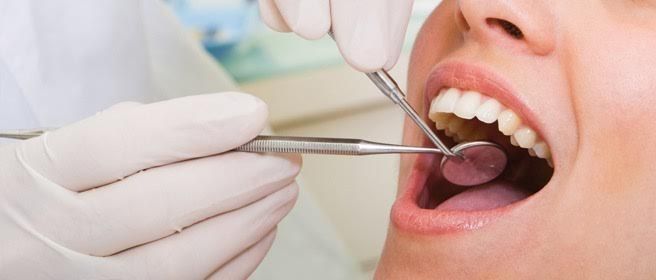Why Is Dentistry So Expensive?
Let’s face it everyone thinks dentists are rolling in the dough given how much it costs to get dental work done. But, what most people don’t understand is our overhead. Below is a link to a great news story giving a detailed explanation as to why dental work costs so much.
http://www.cbsnews.com/news/why-your-dentist-costs-so-much/
I feel like this article shines a light on what goes on within a dental office. A few points I feel are important to highlight:
“Dental care is not a commodity. It’s not laundry detergent or breakfast cereal or wireless minutes. Dentistry is a professional service that’s both art and a science. Yes, there are excellent dentists and not-so-great dentists. Often, you get what you pay for. Yet even great dentists have bad days. “I consider myself an awesome dentist,” Dr. W. told me. “And I’ve had failures.””
I had a patient recently compare what I do to purchasing parts at an automotive store and that I was trying to up-sell him because he could not get his “free” cleaning that came with his insurance. He had not been to the dentist in over 10 years. Obviously we attempted to educate him on his condition but unfortunately it fell on deaf ears and he chose to leave and go elsewhere in pursuit of his “right” to a free cleaning.
Dental insurance drives docs nuts and they wish they didn’t have to use it. “The number one most complicated aspect of running a dental office, bar none, is dealing with dental insurance. You wouldn’t believe how long it takes to get through to a rep, make sure the patient does have benefits, calculate a copay,” says Dr. M. And the largest insurance plans in the country discount most dentists’ fees by 10% to 20%. If you’re paying out of pocket, ask for a discount. (You might discover the dentist is giving you one already.)
Much of the time insurance are 20% less than our fee and then there is cost of hiring someone just to deal with these insurance companies. They are not always transparent in their coverage. Yet, we get caught in the middle when an insurance company lets us know something wasn’t covered completely or at all for some underlying fine print reason. When we inform the patient often times they are angry or defensive because they were given a “treatment plan” (with the word “estimate” all over it) and now we are trying to collect more than that printed plan. Alas, we spend weeks going back and forth attempting to explain and collect the additional co pay.
Dentists wish patients would value their teeth more. Teeth are a crucial part of health and appearance. Untreated gum disease, for instance, is linked to heart disease. (Would you choose a cardiologist based on price?) “With time, you will come to realize that shopping price is a minor concern when it comes to your health,” says Dr. W. “Any minor cost differences amortized out over a lifetime will become insignificant. You will get the best results and have the most long-term satisfaction getting care from someone you trust.”
This has to be the most frustrating fact for sure, at least for me. Your teeth and gums are actually connected to your body. There was a story recently on Facebook that went viral about a truck driver who died from an abscessed tooth. I was shocked to see the responses questioning what the dentist might have done wrong to cause this person’s death……it had nothing to do with a dentist, the person simply allowed his tooth to abscess for so long that the untreated infection killed him. We often feel pressed to “watch” a tooth or observe it because the patient may not feel anything wrong at the time, or there are other more pressing matters. But, the funny thing is, the situation of concern doesn’t get better. Decay continues to grow, marginal integrity of an older filling only keeps leaking, cracks continue to deepen. I have trained my team that when I mention we can just “watch” a tooth, they are to ask me “what will we watch it do doctor?”
I don’t expect anyone to feel sorry for me as a dentist, I chose this profession and I do love what I do. After 10 plus years of doing this kind of work I do get frustrated at times with the public perception of what I do. Dentistry is in a great era. 3D imaging is allowing us to see things we never saw before. CAD/CAM technology is allowing us to create beautiful restorations in a single day. Dental materials are stronger and more esthetically pleasing. Although this technology comes with a hefty price tag it is an exciting time to be a dentist. For those of us who are CE junkies, like myself, I can increase and define my skill level to better serve my patients more efficiently than ever before. Using this technology I was able to start planning and placing dental implants. Five years ago I added the exciting field of Sleep Dentistry to my practice. Oral appliance therapy (OAT) can be used to treat night time bruxism, snoring and obstructive sleep apnea. I have truly enjoyed this arm of my practice. Giving someone a good quality night sleep back is very rewarding.
As I watch yet another dental chain enter our community I can’t help but worry that patients will transfer in hopes of lower fees. Dental chains have buying power I don’t have as a private practice owner. But what they won’t find is the individual attention a private practice dental office can offer. What they won’t find is a dentist who 100% owns their own practice, is invested in the employees and community and truly cares what their patients think.
Next time you visit your dentist, whether it be my office or any other private practice office I hope this blog has given you a better appreciation of what goes on behind the scenes. Just like any other profession there will always be those who are in it for the wrong reason but for the most part we are all good people who go into dentistry to help people and make this world a better place one tooth at a time!



